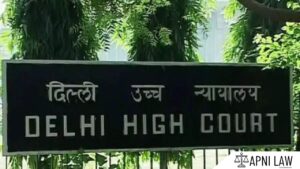The Securitisation and Reconstruction of Financial Assets and Enforcement of Security Interest Act, 2002 (commonly known as the SARFAESI Act) is a key legislation in India designed to tackle non-performing assets (NPAs) in the banking sector. Its features include:
It empowers banks and financial institutions to recover outstanding loans without court intervention. This allows them to seize and sell collateralized assets in case of loan defaults.
The Act supports the formation of Asset Reconstruction Companies (ARCs). It can purchase bad loans from banks and work to manage or restructure them.
Lenders can send a notice to borrowers, giving them 60 days to settle their dues. If borrowers fail to respond, lenders can take possession of the secured assets.
The Reserve Bank of India regulates ARCs and ensures adherence to the provisions of the Act.
The establishment of a Central Registry records securitisation transactions, ensuring transparency and security in asset transfers
The Act applies to a wide array of financial assets. This includes both movable and immovable properties, offering flexibility in the types of collateral used.
How To File A Case Under The The Securitisation And Reconstruction Of Financial Assets And Enforcement Of Security Interest Act, 2002?
To file a case under the Securitisation and Reconstruction of Financial Assets and Enforcement of Security Interest Act (SARFAESI Act), follow these steps:
File your application with the Debt Recovery Tribunal (DRT) if you are contesting actions under the SARFAESI Act, particularly under Section 17. Section 17 of the SARFAESI Act allows a borrower or any aggrieved person to challenge actions taken by the bank or financial institution when they take possession of or sell secured assets (like property) due to loan default.
Prepare a detailed application that outlines the case facts, grounds for the appeal, and the relief you are seeking, ensuring it adheres to the prescribed format.
File your application with the DRT within 45 days of receiving the notice from the secured creditor, along with the necessary documents and applicable fees.
If dissatisfied with the DRT’s ruling, you can appeal to the Debt Recovery Appellate Tribunal (DRAT) within 30 days of the DRT’s decision.
Follow all procedural requirements set out in the SARFAESI Act and its associated rules.
How To File An Appeal Under The Securitisation and Reconstruction of Financial Assets and Enforcement of Security Interest Act?
Anyone aggrieved by an order issued by the Debt Recovery Tribunal (DRT) under Section 17. They are eligible to file an appeal.
You must submit the appeal within 30 days of receiving the DRT’s order.
Before you file, you must deposit 50% of the outstanding debt claimed by the secured creditor.
The Appellate Tribunal may reduce this amount to 25% at its discretion.
Prepare the appeal, including details of the appellant and respondent. Also add a declaration of jurisdiction, facts of the case and grounds for the appeal. Finally, add the relief sought and proof of the pre-deposit.
File your appeal with the Debt Recovery Appellate Tribunal (DRAT), along with the necessary documents and fees.
The DRAT will adjudicate the appeal in accordance with the Recovery of Debts Due to Banks and Financial Institutions Act, 1993.
What Are The Recent Amendments To The Securitisation and Reconstruction of Financial Assets and Enforcement of Security Interest Act?
The restriction on sponsors of Asset Reconstruction Companies (ARCs) from holding a majority stake has been removed, with the Reserve Bank of India (RBI) now setting ‘fit and proper’ criteria for sponsors .
The RBI now has the authority to conduct audits and inspections of ARCs, increasing regulatory supervision .
The proposal sets a 30-day deadline for District Magistrates. This is to issue orders for asset possession, which may extend up to 60 days under specific conditions.
The amendment clarifies that you can file appeals in the Debt Recovery Tribunal (DRT). It can be files from where the cause of action arises. Additionally, it can be from where the secured asset is located, including the relevant branch jurisdiction .
The DRT’s authority to restore assets has been broadened. Thus, allowing it to restore assets to any individual, not just the borrower, under certain circumstances.











